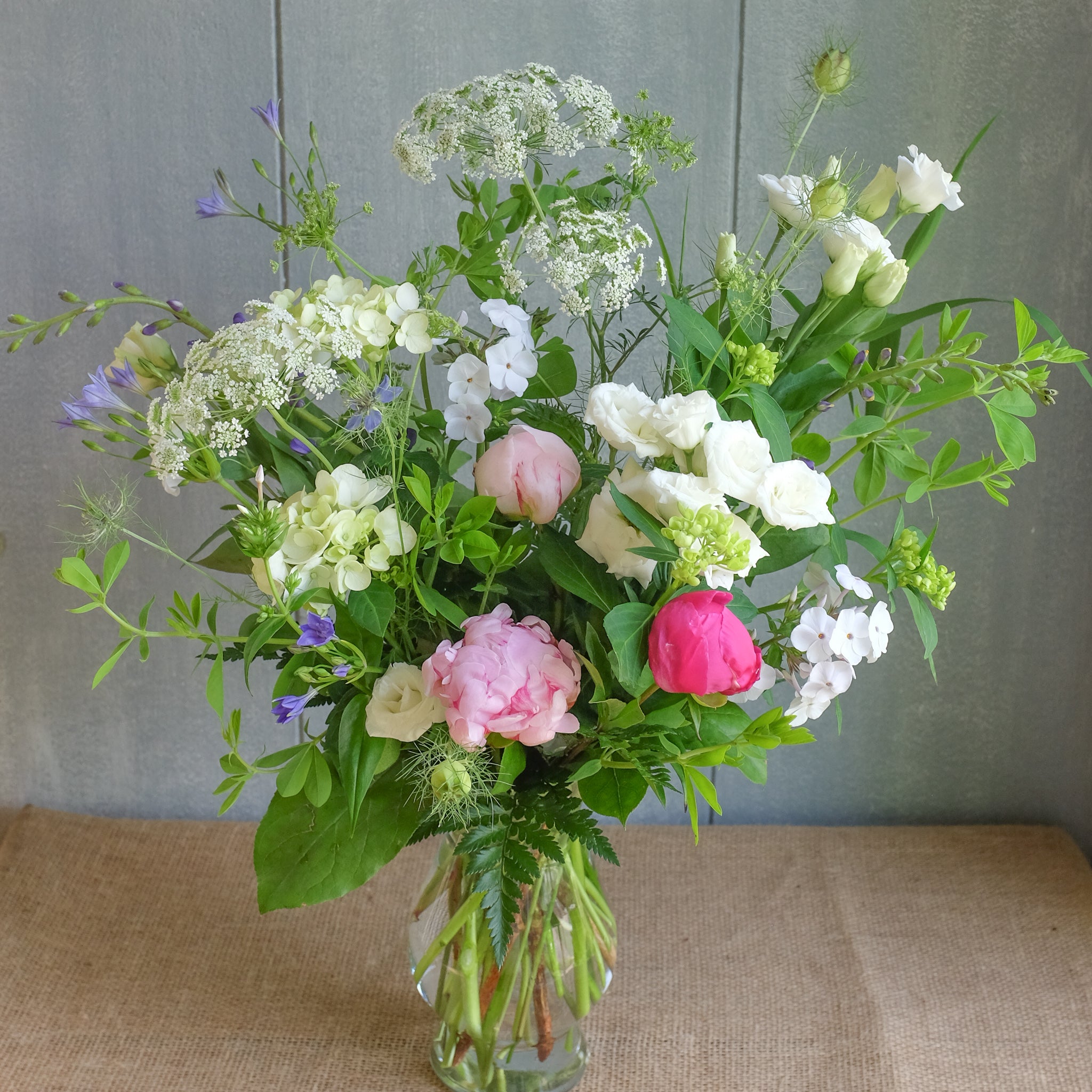Recently, I had the opportunity to spend a week at the farm at World's End, headquarters of Sarah Ryhanen's floral design collective Saipua. You can read more about Sarah's team and their incredible work here: Story — SAIPUA
Instead of rehashing Sarah's career and remarkable contributions to the field of floristry or describing the intricate workings of the farm, what I'd like to offer instead are some of my highly subjective takeaways from my time there.
*
Floral design is an interesting beast. Simultaneously an artistic endeavor, a customer service position, and a time-sensitive group project, practicing design in a small shop like Michler's asks you to flex muscles and personality traits you didn't know you had. There are 14-hour days during peak seasons. There are emotional phone calls from grieving patrons. There are delivery van emergencies in six inches of mud.
And there are always flowers. I often joke with friends that half my job is yelling at flowers. While that isn't entirely true, many are the moments when I've wished that a flower was sturdier or turned a different way or just a few inches taller. Beginning an arrangement can feel akin to a declaration of war. It's the cost of working with a perishable medium.
My week at the farm represented the first time I had ever designed with no prompt, no timetable, no threat of a customer complaint if things didn't go to plan. Sarah did give us rough guidelines regarding the overall style of our arrangement and the container we were to work with each day of the residency. Beyond that, nothing was off limits.
I settled into a rhythm of designing slowly. I cut my materials every morning, choosing only what I liked. I worked at my design station in the old barn until I was finished. I paid attention. I listened.
There was a great deal to listen to on the farm. You could almost always hear the sheep, especially after we helped move them from the upper to the lower pasture. The songbirds were loud in the mornings. Later, the chickens strutted out of their enclosure, muttering and searching for scraps. I chatted with my fellow (human) residents and learned about their histories and their hopes. Sarah offered critiques of our arrangements.
I also listened to the flowers. The ways they moved, the shapes in which they grew. The color gradations from petal to petal. The thickness of their stems. The leaves fading in the onslaught of cool autumn mornings and evenings.
Like any other art form (and floral design is an art form, no matter that I spend 40+ hours a week doing it), creating an arrangement is a collaboration between artist and materials. It can even be called a form of play--an endless asking "what if." What if this stem went here? What if I transitioned to this color instead? Endless possibilities imagined, executed, rejected, embraced.
Exploring those possibilities takes time as well as humility. Flowers, as I've mentioned, are fragile. So are humans. Floral design invites us to pause and pay attention to ourselves and our materials--to celebrate those things that often make me roll my eyes on a busy day at the shop, like a too-short stem or a crook-necked dahlia. When we pay attention, these quirks become qualities worth celebrating. They can even become the most interesting part of an arrangement.
Of course, it isn't efficient to design this way. I don't always have the luxury of time or of leisurely selecting my favorite materials, and the holidays are more a matter of survival than luminous inspiration.
Yet the reminder persists: Pay attention. There is beauty here.
*
Read about other Team Members' Trips or learn about how to Join the Team.


